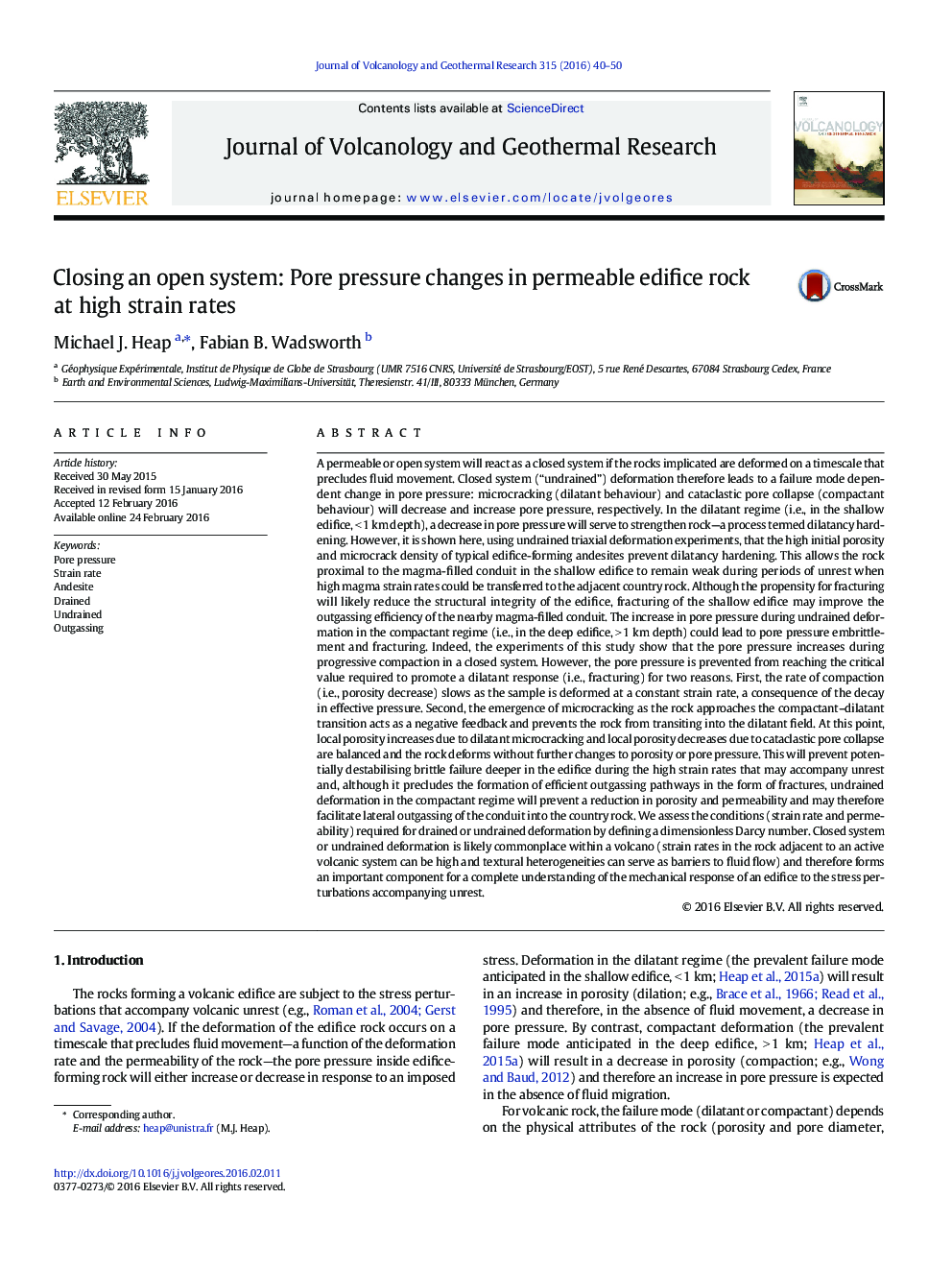| کد مقاله | کد نشریه | سال انتشار | مقاله انگلیسی | نسخه تمام متن |
|---|---|---|---|---|
| 4714158 | 1638307 | 2016 | 11 صفحه PDF | دانلود رایگان |
• “Undrained” describes deformation on a timescale that precludes fluid movement.
• In this case, dilatancy reduces pore pressure and compaction increases pore pressure.
• Microcracked and porous volcanic rocks do not exhibit dilatancy hardening.
• Undrained compaction does not result in pore pressure embrittlement.
• Implications for edifice stability and outgassing are discussed.
A permeable or open system will react as a closed system if the rocks implicated are deformed on a timescale that precludes fluid movement. Closed system (“undrained”) deformation therefore leads to a failure mode dependent change in pore pressure: microcracking (dilatant behaviour) and cataclastic pore collapse (compactant behaviour) will decrease and increase pore pressure, respectively. In the dilatant regime (i.e., in the shallow edifice, < 1 km depth), a decrease in pore pressure will serve to strengthen rock—a process termed dilatancy hardening. However, it is shown here, using undrained triaxial deformation experiments, that the high initial porosity and microcrack density of typical edifice-forming andesites prevent dilatancy hardening. This allows the rock proximal to the magma-filled conduit in the shallow edifice to remain weak during periods of unrest when high magma strain rates could be transferred to the adjacent country rock. Although the propensity for fracturing will likely reduce the structural integrity of the edifice, fracturing of the shallow edifice may improve the outgassing efficiency of the nearby magma-filled conduit. The increase in pore pressure during undrained deformation in the compactant regime (i.e., in the deep edifice, > 1 km depth) could lead to pore pressure embrittlement and fracturing. Indeed, the experiments of this study show that the pore pressure increases during progressive compaction in a closed system. However, the pore pressure is prevented from reaching the critical value required to promote a dilatant response (i.e., fracturing) for two reasons. First, the rate of compaction (i.e., porosity decrease) slows as the sample is deformed at a constant strain rate, a consequence of the decay in effective pressure. Second, the emergence of microcracking as the rock approaches the compactant–dilatant transition acts as a negative feedback and prevents the rock from transiting into the dilatant field. At this point, local porosity increases due to dilatant microcracking and local porosity decreases due to cataclastic pore collapse are balanced and the rock deforms without further changes to porosity or pore pressure. This will prevent potentially destabilising brittle failure deeper in the edifice during the high strain rates that may accompany unrest and, although it precludes the formation of efficient outgassing pathways in the form of fractures, undrained deformation in the compactant regime will prevent a reduction in porosity and permeability and may therefore facilitate lateral outgassing of the conduit into the country rock. We assess the conditions (strain rate and permeability) required for drained or undrained deformation by defining a dimensionless Darcy number. Closed system or undrained deformation is likely commonplace within a volcano (strain rates in the rock adjacent to an active volcanic system can be high and textural heterogeneities can serve as barriers to fluid flow) and therefore forms an important component for a complete understanding of the mechanical response of an edifice to the stress perturbations accompanying unrest.
Journal: Journal of Volcanology and Geothermal Research - Volume 315, 1 April 2016, Pages 40–50
